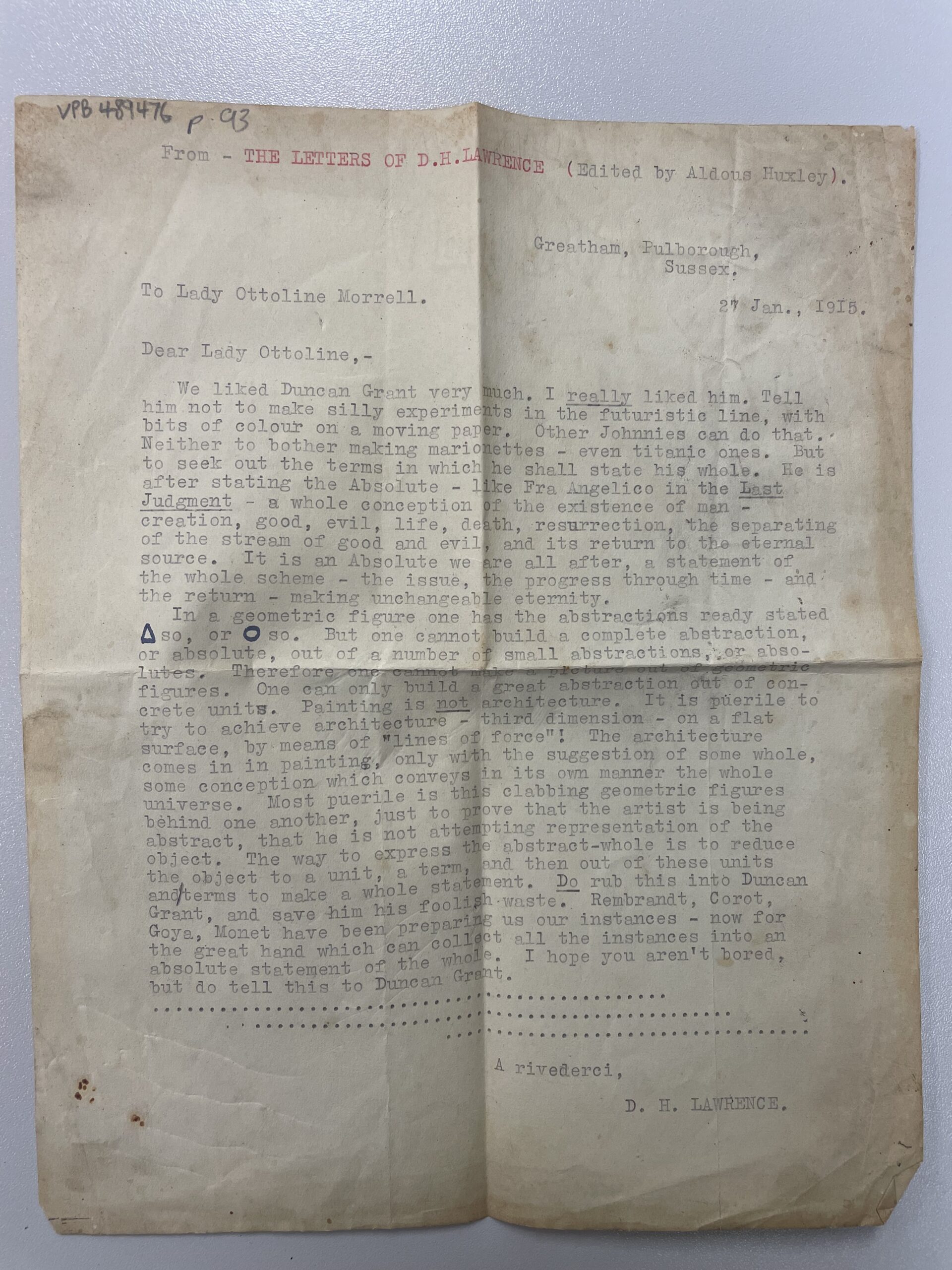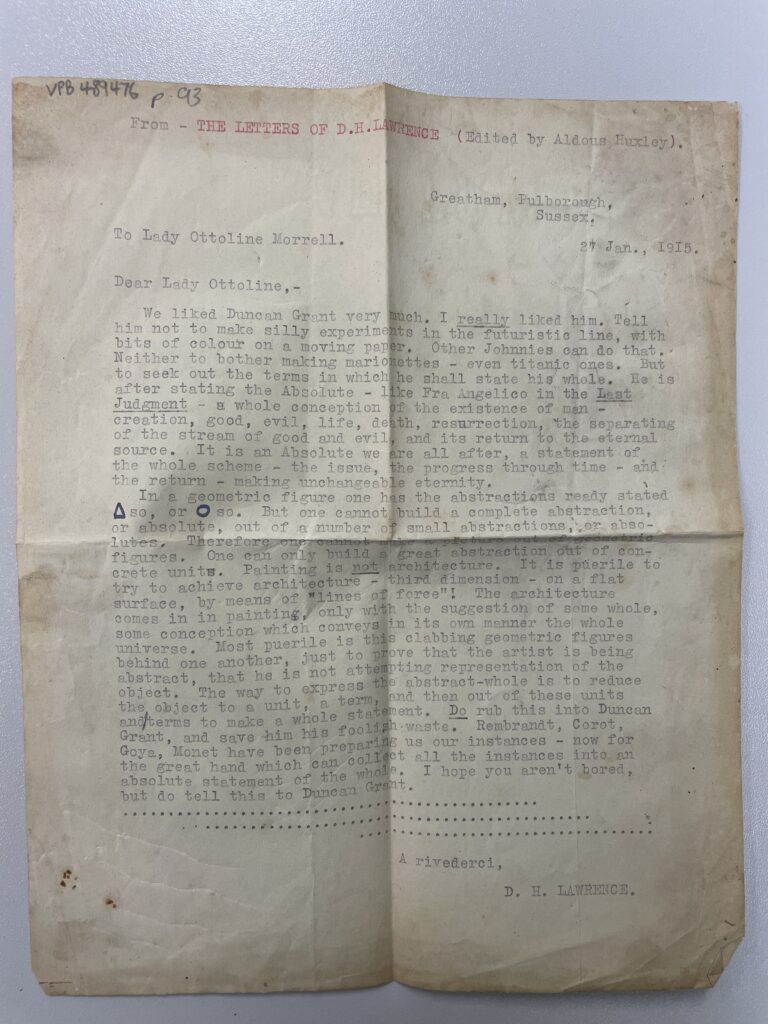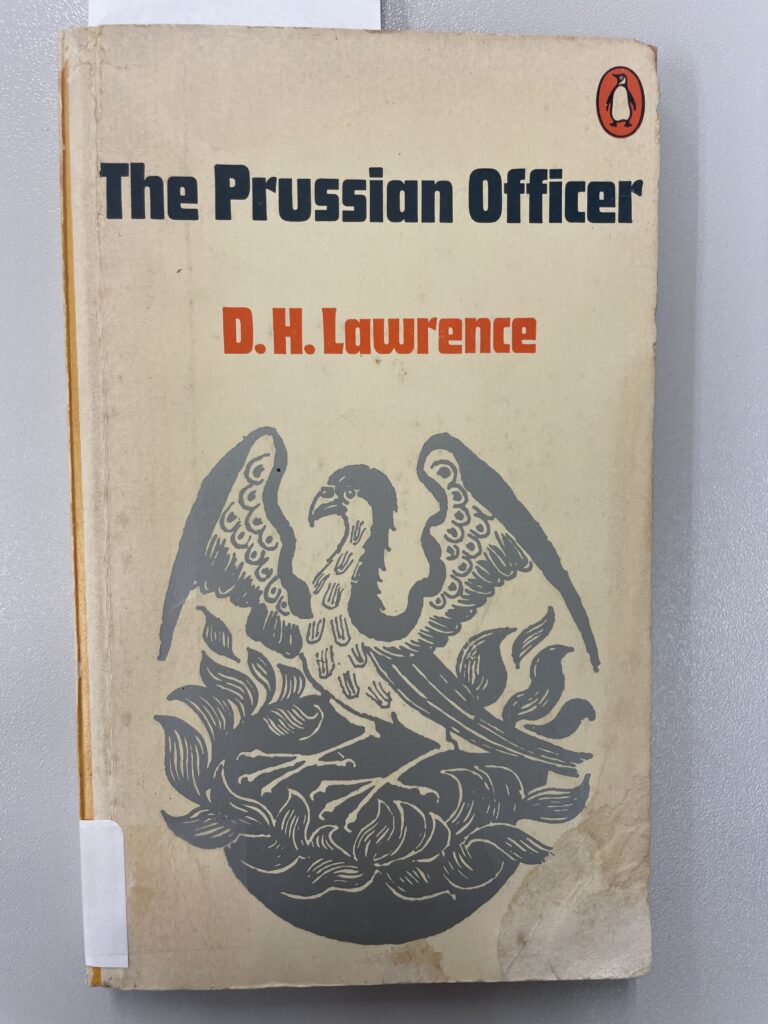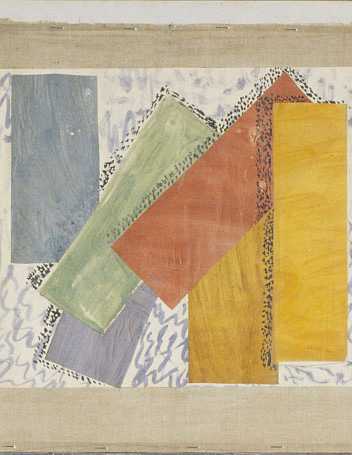D.H Lawrence
Antonia Critien
It took me some time to realise that in these two tightly packed bookcases from Pasmore’s private library, when it comes to fiction there is little to none. Although we have no doubt where Pasmore’s interests lay, an extensive library with no fiction in it is still quite surprising! So as my eyes landed on D.H Lawrence I had to wonder why Lawrence? and was there a connection? Lawrence’s diversity and the fact that he was quite an outlaw make him somewhat intriguing. Novelist, poet, playwright, critic and even painter, Lawrence never shied away from critics and refused to be belittled or silenced when his novels were banned, or his paintings confiscated by the police (for portraying illicit behaviour, homosexuality and nudity). His life motto became his lifelong adopted symbol – the phoenix – a symbol of regeneration. Only when one is completely beaten down can one rise up and realise one’s true potential. The Prussian Officer is an early collection of stories by Lawrence first published in 1914. Inside the book I found a typed copy of one of Lawrence’s letters originally published in The Letters of D.H Lawrence (edited by Aldous Huxley 1932), and here lies what probably most interested Pasmore. This is a letter Lawrence wrote to Lady Ottoline Morrell in 1915. Morrell (1873-1938) was a society hostess and patron of the arts. Breaking ties with her upper-class family, she formed an intellectual circle bringing together artists and academics who shared ideas and enjoyed a good debate. Among these were Roger Fry, W.B Yeats, Dora Carrington and D.H Lawrence himself. In this letter, Lawrence showers praise on the artist Duncan Grant, a Scottish artist and central figure of the Bloomsbury group, who Pasmore knew. In 1932 Pasmore became a member of the London Artists’ Association which was headed by Duncan Grant and Roger Fry and in 1937 he moved into a studio at 8 Fitzroy Street that had previously been used by Grant and others. During a visit to Grant’s studio in 1915, Lawrence was horrified to see Grant’s abstract experiments and must have felt compelled to do something about it. In this letter, Lawrence, a figurative painter himself, implores Lady Morrell to speak to Grant, to persuade him to seek out the terms in which he shall state his whole, and to stay well away from silly experiments in the futuristic line. Duncan Grant did in fact move into the realm of abstraction for a short while and was one of the first British artists to produce a completely abstract artwork that even unrolled to the sound of music (Abstract Kinetic Collage Painting 1914, which could well be what agitated Lawrence), however he returned to figurative painting soon after. In the 1940s, unable to build any further on the principles of impressionism and cubism, Pasmore discovered abstract art and never looked back.
In 2018, Victor Pasmore’s children, John Henry Pasmore and Mary Ellen Nice, donated over 500 books and exhibition catalogues to the University of Malta, Archives and Rare Books Department. The Victor Pasmore Gallery is open to visitors at APS House, 274 St Paul Street, Valletta.

